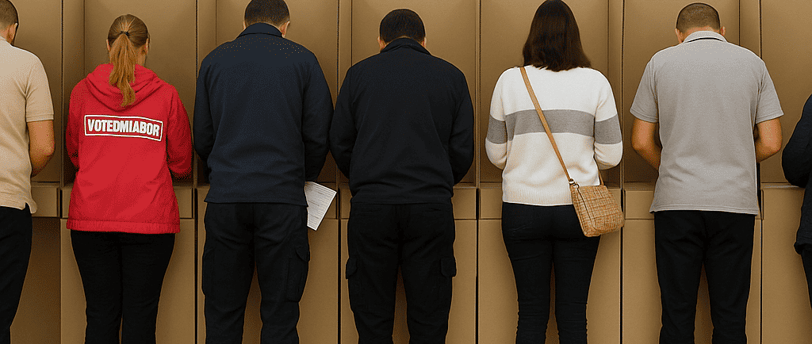How Compulsory Voting Works in Australia – And Why It Matters!
Discover how compulsory voting shapes Australian democracy. This blog dives into the history, mechanics, and impact of mandatory voting laws in Australia — from legal requirements and voting day traditions to political legitimacy and public opinion. Learn why Aussies don’t just vote — they turn it into a national event, complete with BBQs and civic pride.
Sandeep Gawdiya
5/2/20253 min read


Australia stands out on the global stage when it comes to democracy. One of the biggest reasons? Voting is compulsory. While most countries encourage citizens to vote, Australia requires it by law — and the results speak for themselves.
What Is Compulsory Voting?
In Australia, all citizens aged 18 and over are legally required to vote in federal elections, by-elections, and national referendums. This isn’t a gentle nudge — it’s a legal obligation.
Voting has been mandatory since 1924, when the Electoral Act was amended. The change led to a dramatic increase in voter turnout: from under 60% in 1922 to over 91% in 1925.
Legal Requirement & Penalties
Enrolment to vote is compulsory, and once registered, failing to vote without a valid excuse can cost you. First-time offenders face a $20 AUD fine, which can increase or lead to court action if ignored repeatedly.
However, not all non-voters are penalized. Valid reasons — like illness, being overseas, or religious objections — can be submitted in writing and reviewed by the Australian Electoral Commission (AEC).
How Voting Happens
Election day is designed to be as accessible as possible:
Held on Saturdays, so fewer people are at work
Polling stations open from 8 a.m. to 6 p.m.
Options include in-person voting, early voting, or postal voting, especially useful for remote communities or Australians overseas
Employers are legally required to provide paid leave to vote, further removing barriers to participation.
Ballot Secrecy and Informal Voting
Though voting is mandatory, how you vote is your own business. Ballots are confidential, and casting a blank or invalid vote (called an "informal vote") still satisfies your legal duty to attend.
So yes, you're legally required to show up — but not legally required to choose a candidate.
Why Australia Leads in Voter Turnout
At the 2022 federal election, about 90% of eligible voters turned out. In comparison:
🇬🇧 UK General Election 2024: 60% turnout
🇺🇸 US Presidential Election 2024: 64% turnout
The difference? Australia requires everyone to participate, making elections more representative of the broader population.
The Big Benefits of Compulsory Voting
1. Stronger Legitimacy
When nearly everyone votes, election results carry more weight. The Australian Electoral Commission says it best:
"A parliament elected by compulsory vote more accurately reflects the will of the electorate."
2. More Moderate Politics
In systems with voluntary voting, parties often appeal to their most extreme supporters — because those are the ones who show up. In contrast, Australia’s politicians must speak to all voters, pushing politics toward the center.
3. Representation for All
Low-income and marginalized communities are less likely to vote voluntarily. Compulsory voting ensures everyone's voice is included, which leads to fairer public policies.
4. Cultural Engagement
Voting isn’t just a duty; it’s part of the national identity. From TV coverage to kids handing out flyers, Australians grow up seeing democracy in action.
The Downsides?
One common criticism is "pork-barrelling" — when politicians spend on flashy, short-term projects to win swing votes. Others argue that forcing people to vote leads to uninformed choices. Still, most experts agree that the benefits outweigh the risks.
Making Voting Easy
Australia doesn’t just demand participation — it supports it:
✔️ Weekend elections to avoid workday conflicts
✔️ Paid time off for workers to vote
✔️ Mobile voting booths for remote communities
✔️ Postal voting for those away or unable to attend
Oh, and let’s not forget the iconic "democracy sausages" sizzling at polling stations — a uniquely Aussie blend of BBQ and civic pride.
What Do Australians Think?
Despite the legal obligation, most Australians support compulsory voting. Since 1967, surveys show around 70% approval, and in 2022, 77% said they would still vote even if it wasn’t mandatory.
Campaigns to make voting voluntary haven’t gained much traction. For most Aussies, voting is a civic habit, not a hassle.
How Elections Work in 2025
In the 2025 general election:
Labor currently holds 77 seats
Liberal-National coalition holds 53
Greens hold 4
15 seats are held by independents or minor parties
A majority in the House of Representatives requires 76 seats. If no party reaches that mark, we could see a minority government, supported by deals with independents.
These agreements aren’t legally binding — they’re political pledges. That means negotiations can shift post-election.
Preferential Voting System
Australia uses preferential voting in the lower house. Here's how it works:
Voters rank candidates in order of preference.
If no one gets over 50% of first-preference votes, the lowest candidate is eliminated.
Their votes are redistributed based on second preferences.
This continues until someone has a majority.
This system ensures that winners have broad public support, not just a simple plurality.
Final Thoughts
Australia’s compulsory voting system isn’t just about turning out big numbers — it’s about building inclusive, fair, and representative democracy. By making it easy (and a little tasty with BBQs), Australia shows how the right mix of policy, culture, and law can keep democracy thriving.
Whether you’re Aussie or just watching from abroad, there’s a lot to learn from how Australia gets democracy done — one sausage and one ballot at a time.
Updates
Delivering timely news and inspiring life stories.
Links
Contact
+917976343438
© 2025. All rights reserved.
